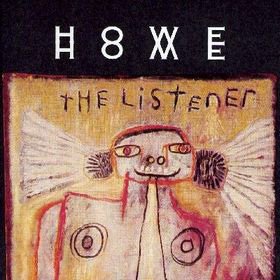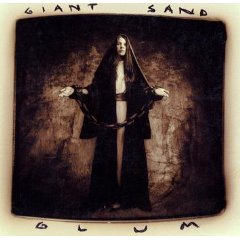FOREWORD: Spontaneous lo-fi bohemian, Howe Gelb, is happy living in partial obscurity as a virtuous cult artist. But unlike prolific Texas folk-blues renegade, Jandek, a weirdly anti-social commoner, he’s available for comments and glad to see you. But just when you think you’ve caught up to his catalogue, the damn guy releases something else. There’s about a dozen recordings as loose collective, Giant Sand, a few as Band Of Black Ranchette, and a growing number as a solo artist. ‘06s ‘Sno Angel Like You may be his finest solo work. This interview was conducted to coincide with Gelb’s concurrent solo LP, The Listener, and Band Of Black Ranchette’s Still Lookin’ Good To Me. Gelb had me sent my 4,000 beer and ale reviews online a few weeks after we spoke in ’03. But he admitted he’d rather hear about my exciting cross-country travels than read the reviews – a problem I’ve struggled with to this day. This article originally appeared in Aquarian Weekly.
“Denmark is a lot like ‘50s America. Its slow pace, lack of traffic, excellent daily baked bread, fresh beer, a quality and quantity of musicians that are great to hang with, and about the best rain I’ve ever been soaked in,” full-blooded American underground rock icon, Howe Gelb, offers. He has called me from the European home he shares with wife, Sofie, and one-year-old daughter.
Pennsylvania-bred Gelb began recording rough-hewn guitar-strewn sketches independently as Giant Sandworm way back in ’79 – over a decade before Liz Phair and Lou Barlow made lo-fi indie rock acceptable. Along with founding guitarist Rainer Ptacek and a revolving lineup, Gelb recast Giant Sand in the Tucson, Arizona, desert during the ‘80s, delivering minor classics such as ‘88s contagious Storm and ‘89s spontaneous Long Stem Rant.
Not far removed from the spiritual revelation of Nick Cave’s prodigious ’01 recording, No More Shall We Part, Gelb’s poignant ’03 solo disc, The Listener, addresses his own mortality and profound musical re-awakening with sophisticated grandeur. Perhaps spawn from the solemn dirge, “(well) Dusted (for the millennium),” from ‘00s Giant Sand release, Chore Of Enchantment, where Gelb coyly suggested ‘Jesus might return, if only a slight return,’ this wayward beatnik drifter canonizes lost comrades (ex-Giant Sand partner Rainer, aged-in-wool country pal Pappy Allen, and a stepsister). He also seeks eternal wisdom on the disjointed medley, “B4U (Do Do Do),” which appropriately slips into Bill Withers’ comforting Gospel-inspired redemption, “Lean On Me.”
Inspired by be-bop pioneers and re-invigorated by eloquent Jazz-skewed Denmark band Under Byen (Howe’s newest cohorts since Giant Sand partners John Convertino and Joey Burns remain busy with fine collective, Calexico), Gelb allows guest vocalists more space to maneuver on The Listener. Popular Danish singer Marie Frank coos like Cat Power on the creamily-oozed “Blood Orange”; Brett and Rennie from neo-trad Country duo Handsome Family caress the tender piano trinket “Moons Of Impulse”; and Under Byen’s Henriette Sennenvaldt intimates Bjork’s desperate fragility on the witchy salsa “Torque.”
On the deviously apologetic blues retreat, “Felonious,” Gelb’s piano steals ‘Lou Reed licks, licks he probably stole,’ as he speak-sings in a monotone voice wholly reminiscent of the ex-Velvet Underground legend who’s then revisited on the relaxed acoustic respite, “Lying There.”
Concurrently, Gelb’s loose-knit side project, Band Of Blacky Ranchette, has spit out the threadbare Country-smitten backwoods charmer, Still Looking Good To Me. Its dusty rural serenades and half-baked train songs provide random escapism.
On top of that, Gelb’s growing list of solo projects include ’91s Dreaded Brown Recluse, ‘98s Hisser, ‘00s Down Home, and ‘01s Confluence.
Since Chore of Enchantment, you’ve constructed full-blown arrangements more often.
HOWE GELB: That’s an accident of age. Rainer was my best buddy, but he died of brain cancer a few years back. We started Giant Sand(worm) around ’79. I’d also done Band Of Blacky Ranchette. Anyway, when he got sick, he started doing things that were leaner. Instead of being Neanderthals, everything meant more because he saw the mortality factor kick in and it only allowed him to do certain things. So my music got tighter just from spending that time with him. So maybe that gave the illusion of arrangements. Chore came out after his death, as did the new Blacky Ranchette.
The new Blacky Ranchette songs seem off-the-cuff compared to the orderly The Listener.
I like music minimal. That’s just its nature.
How do you know which songs fit solo endeavors as opposed to group projects?
The songs let me know. I have piles of songs. My best investment was to buy a Sears Craftsman box on wheels that locks. I throw all my recordings in there on DAT tape or CD that I make throughout the year. I’ll go through the stuff and do some house cleaning. Then, I compile these different records. Blacky is more influenced by old Country. It’s my take.
How does earlier Blacky Ranchette material compare to the new set?
The first one was more rambunctious and vocals more energetic but worse. You can hear fun guitar interplay between Rainer and me. There were endless jams we used to do. The next one maintained a more upbeat barroom tone. The third was mellower and this one is more so except two songs with Neko Case that she rode shotgun on and ended up mixing herself. Then, there’s the one I did with Grandaddy that’s “Working on the Railroad.” The rest is more Texas troubadour stuff where there’s a long meandering story with wacky small weird bits. I stay away from the dismal, dark, dank weight of Chore. It’s too depressing to listen to that.
Chore’s lyrics seemed more detailed than past recordings.
That record took over a year to finish. I started recording seven weeks after Rainer’s death and couldn’t hear straight. When we started working with Jon Parish (PJ Harvey) on that, I was unintentionally giving him a hard time. I thought the material was too old and I sucked on some. My voice was too weird. We divided the material into two camps. The Rock Opera Years was a tour-website only CD of unreleased Chore material. Many people prefer that one. It was tumultuous in the sense that Rainer had spent an extra 20 months here after being diagnosed with cancer. He was doing well until the final seizure when I was wrapped up with his family. So maybe more heart and soul was put into Chore because I was able to re-think ideas.
‘94s Glum was another disconcerting album since C & W pal Pappy Allen died in its wake.
Yeah, but my stepsister had died. When I wrote “Left,” it sounds like Pappy, but I wrote it for her. Before the record came out, Pappy passed away. I remember I was singing like crap but loved the songs and the way the sessions came out. “Yer Ropes” I spent days on honing. I’m lazy by nature despite the ton of stuff I put out. I’d rather stuff just pop up, but I forced myself to play with discipline for “Yer Ropes.” I sometimes forget to put choruses in songs, which is generally rude. I was set up in an old New Orleans studio. It’s like a mansion with four huge upstairs bedrooms. There’s no glass separation in the living room where gear is set up.
 ‘91s Ramp and ‘92s Center of the Universe have stretched out solos and lack traditional arrangements, but the playing is amazing.
‘91s Ramp and ‘92s Center of the Universe have stretched out solos and lack traditional arrangements, but the playing is amazing.
I love that Neil Young Harvest feel of catching a song the first time in the studio. Early on, we tried to train people to get used to that and not assume we’d rehearse. You don’t know where a song’s gonna go. It’s like surfing a wave and seeing how far you could ride it without falling off. After that, you’ll be thinking about how the song goes instead of feeling how it goes. I like Center a lot. It’s my favorite. I was living in a one-room Joshua Tree cabin in the middle of the dessert. It was the perfect element for writing – no t.v. I had my three-year old daughter on occasion. I’d drive to Venice Beach and record at Lincoln Boulevard. I was lucky to have singers Vicki Peterson and Susan Cowsill (of Continental Drifters) work fast to get the records done dirt-cheap. They nailed their five songs in 40 minutes. I let them find the melody since I didn’t have the resource to hit it with my vocals. At the last minute, we added violin to some songs.
You’ve moved away from guitar playing, choosing piano as main instrument.
I was wood shedding the last few years. In Tucson during the summer, everyone clears out. I’d find a little bar and grill where they’d have a real piano and people would show up and it became a jam. I did that a few summers.
Who are some formative influences?
I was 14 in ’72. That’s’ the year I began buying records. I didn’t have older siblings so I was left to my own devices. The cover art would impress me or I’d pick up something heard on different progressive rock stations. My favorite produced album is Sticky Fingers. Every tone, arrangement, and tape cut was perfect, especially “Can’t You Hear Me Knockin’.” There’s the most precise jam on its ending. Neil Young’s Everybody Knows This Is Nowhere, Led Zeppelin IV, and Humble Pie’s Smokin’ were faves. I saw Mott The Hoople twice. I found two Todd Rundgren records from the cheap bin.
I stumbled into piano Jazz by Memphis Slim, Mc Coy Tyner, Tommy Flanagan. At 19, I stumbled into Country by David Bromberg and through an old Texas roommate, I found old Country. On piano, once I hit Thelonius Monk I knew I didn’t have to go further. With Country, it’s Jimmie Rodgers. What influenced Giant Sand most was the nature of an improvised mind, but without the talent. The attitude was there, but ability wasn’t. Giant Sand harbored the attitude of changing songs around, fucking with them to entertain ourselves; see if we could do a song as a waltz when last night it was in 4/4. But that’s not a great marketing tool.